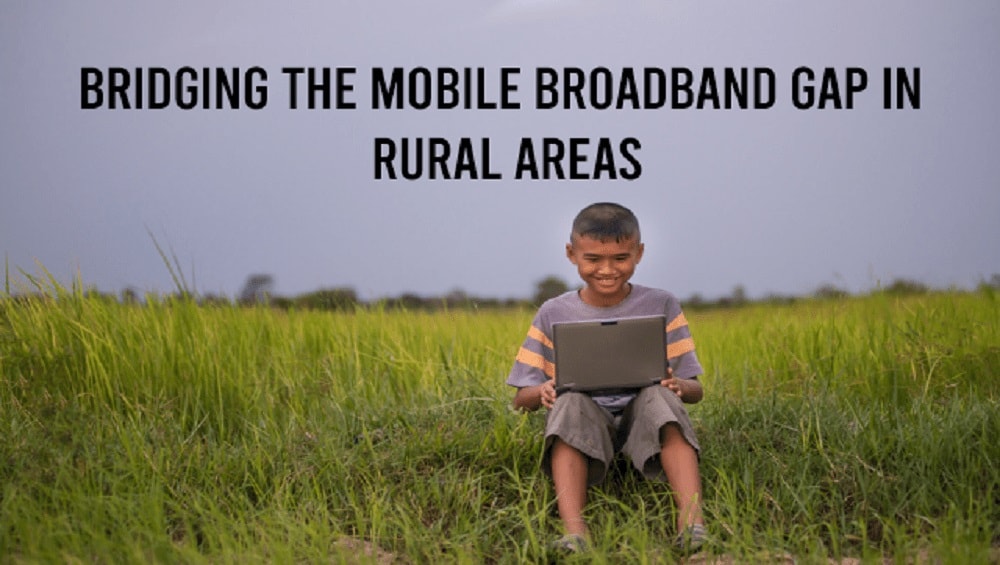Bridging the Mobile Broadband Gap in Rural Areas

The telecom landscape of the world has evolved dramatically in a very little time. The internet has become the key enabler of social development and economic growth. While in many countries, mobile is the major and sometimes the ONLY means of internet access.
We Are Social and Hootsuite’s latest collection of Global Digital reports revealed:
- There are 5.11 billion unique mobile users in the world today, up 100 million (2 percent) in the past year.
- There are 4.39 billion internet users in 2019, an increase of 366 million (9 percent) versus January 2018.
- 3.26 billion people use social media on mobile devices in January 2019, with the growth of 297 million new users representing a year-on-year increase of more than 10 percent.
While the on-the-go connectivity has become a mundane thing for people in large cities, for many rural communities mobile broadband remains painfully out of reach. There are still more than a billion people offline, which doesn’t only mean that people are missing out on their social media updates and phone calls; on the contrary, they are unable to participate in the digital economy and unaware of the opportunities it can offer them.
While the on-the-go connectivity has become a mundane thing for people in large cities, for many rural communities mobile broadband remains painfully out of reach
Pakistan is a country with a population of 212 million and as of May 2019, there were approximately 162 mobile subscribers and 60 million mobile broadband users in Pakistan. This shows that there are still 52 million people who don’t use mobile phones while 152 million people have yet to taste the fruit of the next generating mobile technology. Pakistan has only 37.9% of people living in the cities while the rest of the people live in rural areas. This means that a large number of unconnected population lives in rural areas where most of the basic necessities of life are unavailable, including mobile broadband.
Pakistan has only 37.9% of people living in the cities while the rest of the people live in rural areas
In an era of connectivity, when everything is dependent on the internet, this connectivity gap exerts the most detrimental effect on the socio-economic structure of our country.
A 10% increase in mobile broadband penetration drives a 1.4% increase in GDP for low-to-middle income countries like Pakistan
The World Bank estimates that the mobile internet has a higher positive economic impact than fixed-line broadband, particularly in developing countries, and that a 10% increase in mobile broadband penetration drives a 1.4% increase in GDP for low-to-middle income countries like Pakistan. This GDP growth, coupled with stimulation of the job market, helps fuel a beneficial circle that reduces poverty, improves infrastructure and services, and further increases internet access and usage.
The mobile is the most powerful technology that can solve more than half of the social and economic issues. The availability of mobile broadband in rural areas means even the most remote schools of the country can connect to the Internet and share ideas with others.
Extending mobile coverage to the rural areas is a great economic challenge due to the higher costs required to roll out infrastructure in these areas
This, in a way, will provide equal learning opportunities to all students, despite their backgrounds and medium of education. Pastoralists and farmers can get instant information regarding cattle herding and farming and check on local market prices and make important decisions. Provision of better and timely health services will also be made possible by sending critical health data and life-saving information through text messages to clinics to support rapid diagnoses for patients in remote villages.
The importance of minimizing the coverage gap has gained the utmost importance in today’s digitized world but it, not a small feat in any way.
A clear roadmap regarding spectrum auctions and future telecom policies will enable operators to build their strategies accordingly
Extending mobile coverage to the rural areas is a great economic challenge due to the higher costs required to roll out infrastructure in these areas. Due to lower population density, the ARPU rate is also low therefore, it can cost up to twice as much to deploy new base stations in rural areas. This lack of return on investment presents a significant obstacle in extending mobile coverage to the far-flung areas.
To ease the financial burden of network expansion for mobile operators, the government should also impose as low as possible taxes and fees and refrain from imposing infrastructural taxes and import duties
To improve the mobile network coverage in the rural areas, both the private sector and the public sector has important roles to play. To encourage investment in extending rural coverage government should make clear policies with respect to different technologies.
Network sharing has emerged as the most viable strategy for expanding network coverage while minimizing the cost
The government should auction off the spectrum with the aim of boosting connectivity rather than as a technique to maximize its revenues. A clear roadmap regarding spectrum auctions and future telecom policies will enable operators to build their strategies accordingly. The government should also grant technology-neutral licenses and allow operators to trade spectrum if needed and auction sufficient spectrum to avoid network congestion.
To ease the financial burden of network expansion for mobile operators, the government should also impose as low as possible taxes and fees and refrain from imposing infrastructural taxes and import duties. In addition to that, Nondiscriminatory access to public infrastructure and context-appropriate competition policy, especially concerning market structure should be introduced.
It is also the responsibility of the government to provide electricity and other infrastructural facilities so that operators could perform efficiently. Universal Service Fund (USF) should be given the leading role in the whole process and robust policies should be developed for the organization.
Besides these direct initiatives, the government can also help overcome the coverage gap by introducing policies to increase the mobile broadband uptake in the country as well. Government should:
- Bring ICT into the school curriculum
- Introduce literacy and digital skills education programs in public institutions
- Connect schools and public offices through broadband to promote a connected environment
- Support entrepreneurs to develop a local digital ecosystem
- Strengthen m-government services
There are a number of ways that mobile operators can use to cut down their operating costs and invest in network expansion. Network sharing has emerged as the most viable strategy for expanding network coverage while minimizing the cost.
According to Accenture, documented examples from Asia and Europe suggest CAPEX savings of around 40–50% (mostly from combining new sites and towers) and OPEX of 20–30% (mostly from fuel and other running costs).
At a time like this when the country is preparing for 5G, the government and the industry players should not forget about the huge chunk of the market that belongs to the unconnected rural community
Back in March 2010 mobile operators in Pakistan agreed to a voluntary tower sharing while in August 2010 they signed a MoU with PTA regarding infrastructure sharing as well. After that, a number of agreements were signed among the operators the first one being signed between Ufone and Jazz back in 2011.
Mobile operators should continue with the approach and improve their coverage to rural areas together. The mobile operators can also go for community networks that target remote communities using micro base stations and a backhaul solution that link into the core network of mobile operators.
By employing better technologies like small cells and indoor towers operators can improve their service quality thus enhancing demand for mobile services, therefore unlocking revenue opportunities that improve profitability
To attain the full benefits of mobility, expanding network coverage is of monumental importance. Introducing affordable devices and services plans, local content and awareness regarding the use of technology will all be in vain if people do not have access to mobile broadband. Therefore, at a time like this when the country is preparing for 5G, the government and the industry players should not forget about the huge chunk of the market that belongs to the unconnected rural community.
PTA Taxes Portal
Find PTA Taxes on All Phones on a Single Page using the PhoneWorld PTA Taxes Portal
Explore NowFollow us on Google News!





